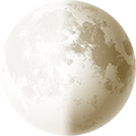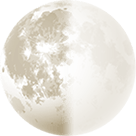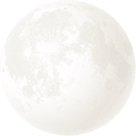September Night Sky Astronomy (2022)What to see in the September night sky including Moon phases, September Equinox, planet guide, Jupiter in opposition, star cluster M22 and M28, and Andromeda and Triangulum galaxies M31 and M33.
September Moon Phases
September's full moon is so called the Harvest Moon because this is when crops are gathered at the end of the summer season. At this time, the Moon appears particularly bright and rises early, letting farmers continue harvesting into the night.
Full Moon and New Moon for September 2022

September 2022 Full MoonThu 1st Jan

September 2022 First QuarterSun 4th Sep

September 2022 Last QuarterSun 18th Sep

September 2022 New MoonMon 26th Sep
Notable Events in September
September 23rd is the September Equinox. The September equinox occurs at 00:55 UTC. The Sun will shine directly on the equator and there will be nearly equal amounts of day and night throughout the world. This is also the first day of autumn (autumnal equinox) in the Northern Hemisphere and the first day of spring (vernal equinox) in the Southern Hemisphere.
September Planets
Jupiter is a splendid object visible in the southern sky as soon as darkness falls, and on September 26th Jupiter reaches opposition, making it appear its brightest and most illuminated. Using higher magnifications you will see the yellowish flattened disc and the four Galilean satellites. You should be able to follow the movement of these moons from night to night. It will be visible in the mornings from January to May, evenings from May to November, and mornings again from mid-December to the end of December.
Saturn is visible in the mornings from late January to early July, and then in the evenings from July to December.
September Meteor Showers
There are no notable meteor showers in September.
September Deep Space Objects
As the warm nights of summer give way to crisp autumnal evenings, there are plenty of autumn deep sky objects to see in the night skies. We take a look at some of the top sights to see during autumn.
M22 is the third brightest star cluster visible in the northern hemisphere and is known to contain at least 75,000 stars. Its low altitude means that it is often overlooked, but at magnitude +5.1, it is a naked-eye object and a fine target for small telescopes. It is fairly easy to see in the low southern skies in the constellation of Sagittarius, approximately halfway from Nunki to µ Sgr. M28 lies nearby, and although lower again
The Andromeda Galaxy (M31) and Triangulum Galaxy (M33) are the real showpieces of the autumnal skies. Both are visible to the naked eye from dark sky sights, and both fine binocular targets. A small telescope will show M31's satellite galaxies M32 and M110, as well as the galaxies' dust lanes.
You can find M33 by following the line from the star Mirach to Upsilon Andromedae, and extending it about the same distance in a straight line.
M33 can be found just less than two-thirds of the way between the stars Hamal in Aries, and Mirach in Andromeda. Through a small telescope, it will appear as a faint, oval-shaped patch of light, while larger telescopes should be able to pick out more detail under dark skies.












